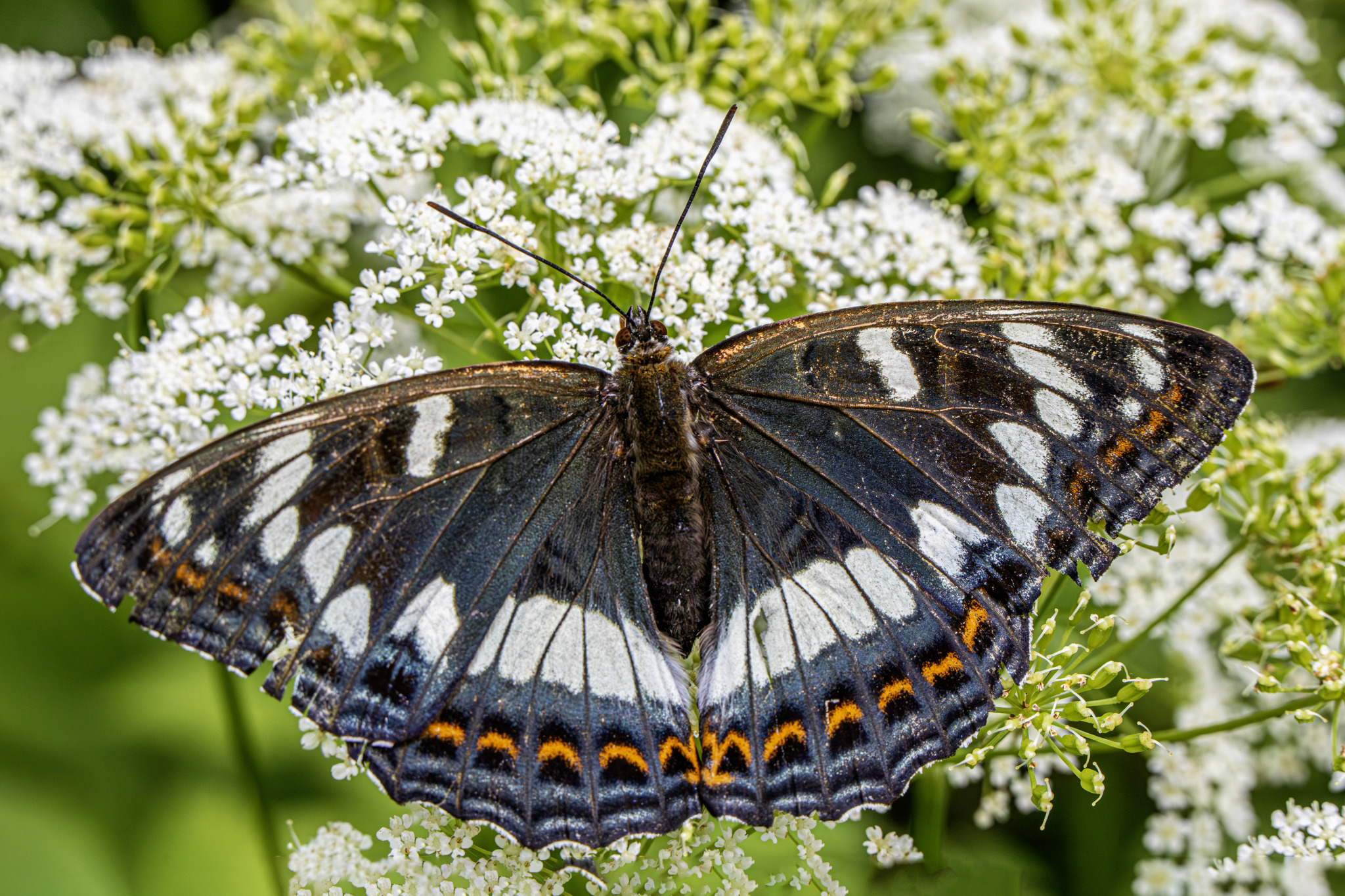The Poplar Admiral (Limenitis populi) is a striking butterfly species belonging to the family Nymphalidae. Known for its impressive size and beautiful coloration, this butterfly is found in parts of Europe and Asia. Here’s an overview of the Poplar Admiral:
Appearance
Adult Butterfly:
- Size: The wingspan ranges from 65 to 85 millimeters, making it one of the larger butterflies in its range.
- Coloration:
- Upperside: The forewings and hindwings are predominantly black with white bands. The forewings feature a prominent white spot near the leading edge, while the hindwings have a white band and a series of small, blue spots near the edge.
- Underside: The underside of the wings is more colorful, with a reddish-brown background, white bands, and blue spots. This coloration helps with camouflage when the butterfly is at rest with its wings closed.
Caterpillar:
- Size: Fully grown caterpillars can reach about 30 to 40 millimeters in length.
- Coloration: The caterpillars are green with a brownish head and a pair of prominent, horn-like projections near the front.
Habitat
- Preferred Habitats: The Poplar Admiral prefers deciduous forests, particularly those with a significant presence of poplar and aspen trees, which are the primary food sources for the caterpillars.
- Geographic Range: This species is found in a range extending from central and northern Europe to parts of Asia, including regions in Russia and China.
Life Cycle
- Eggs: Eggs are laid singly on the leaves of host plants, primarily poplar and aspen trees.
- Larvae: The caterpillars feed on the leaves of these trees, going through several molts as they grow. They are well-camouflaged among the foliage.
- Pupae: Pupation occurs in a chrysalis, which is usually suspended from a leaf or twig.
- Adults: Adult butterflies emerge in the summer and are typically seen from June to August. They are strong fliers and often found in forest clearings and along forest edges.
Behavior
- Feeding: Adults feed on nectar from a variety of flowers, as well as tree sap and overripe fruit. Caterpillars feed exclusively on the leaves of poplar and aspen trees.
- Activity: Adult Poplar Admirals are diurnal and are most active during sunny weather. They are often seen basking with their wings open or visiting flowers and damp ground for nutrients.
- Overwintering: The species overwinters as a caterpillar, often in a hibernaculum created by rolling a leaf and securing it with silk.
Conservation Status
- Population: The Poplar Admiral is not currently considered endangered, but it is relatively rare and localized in many parts of its range.
- Conservation Efforts: Conservation efforts focus on preserving forest habitats, particularly those with an abundance of poplar and aspen trees. Efforts also include monitoring populations and protecting critical habitats from deforestation and development.
Identification Tips
- Coloration: Look for the distinctive white bands and blue spots on the black upper side of the wings. The reddish-brown underside with white and blue markings is also a key feature.
- Size: Its relatively large size can help distinguish it from other butterflies in its range.
Summary
The Poplar Admiral (Limenitis populi) is a magnificent butterfly known for its large size and striking coloration. It inhabits deciduous forests with poplar and aspen trees, which are essential for its life cycle. While not endangered, the Poplar Admiral benefits from conservation efforts aimed at preserving its natural habitats. Recognizing this butterfly involves noting its distinctive wing patterns and understanding its habitat preferences and behavior.
Views: 325
Subscribe to the newsletter:
